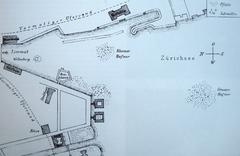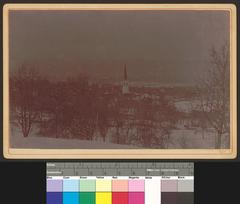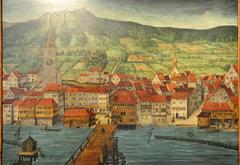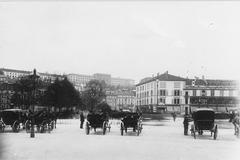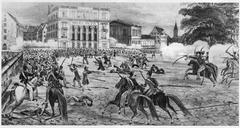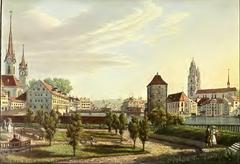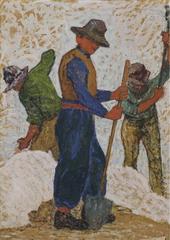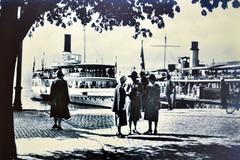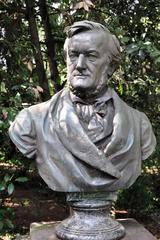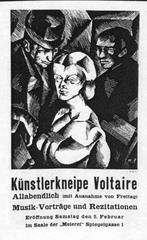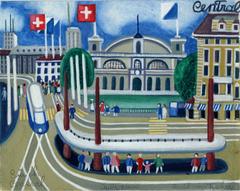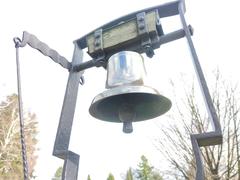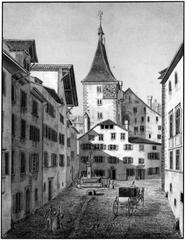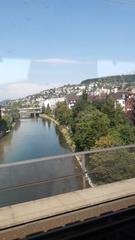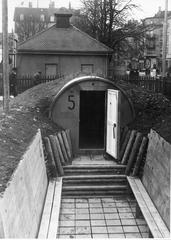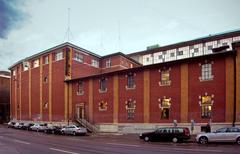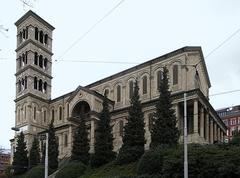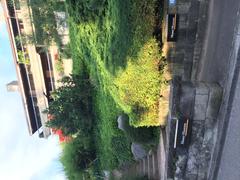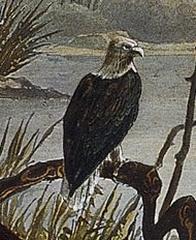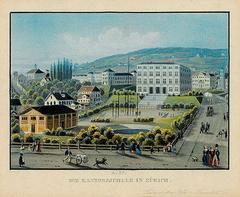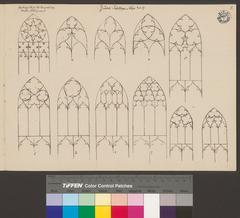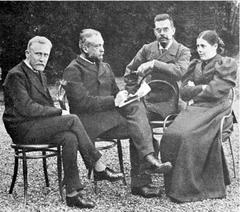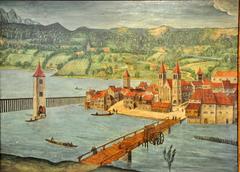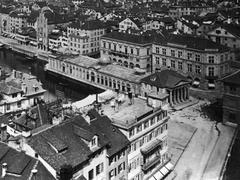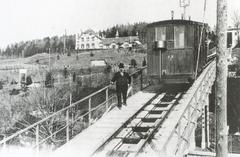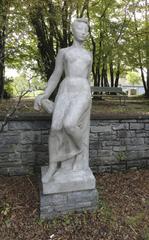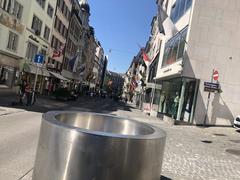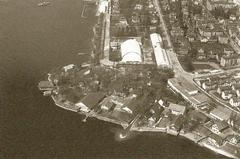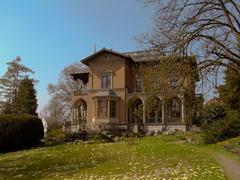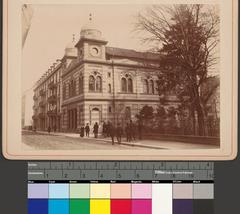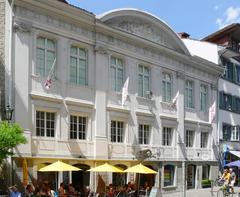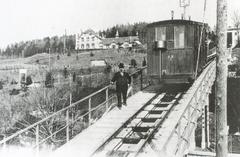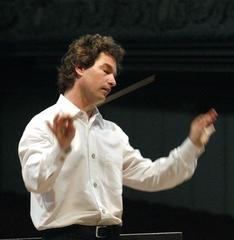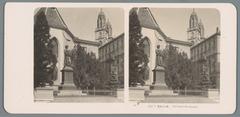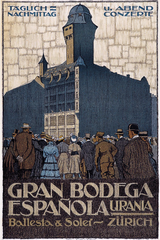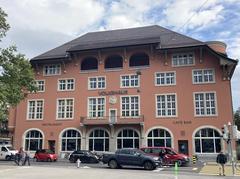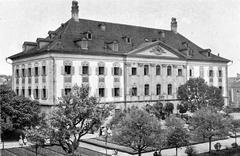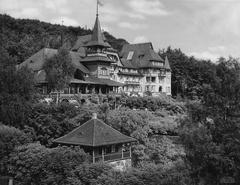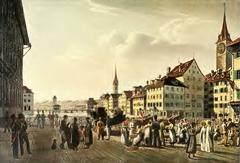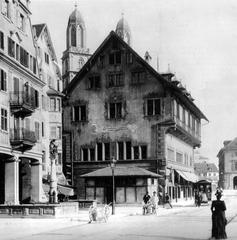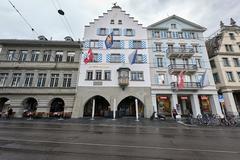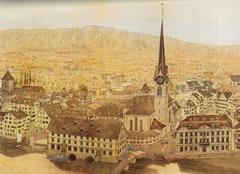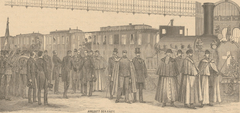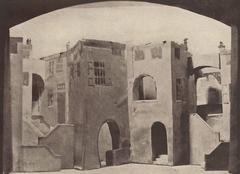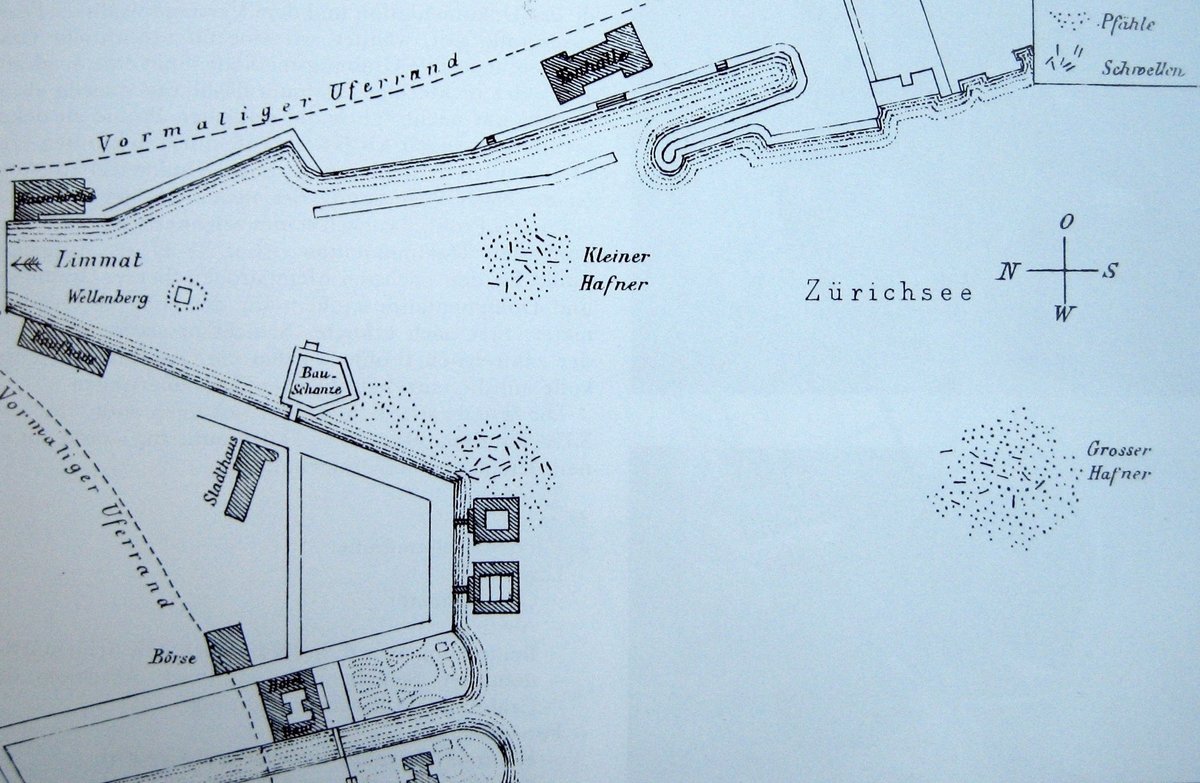
Grosser Hafner Zurich: Visiting Hours, Tickets, and Historical Site Guide
Date: 15/06/2025
Introduction
Nestled at the confluence of the Limmat River and Lake Zürich, Grosser Hafner stands as one of Zürich’s most important archaeological treasures. Though today submerged beneath Lake Zürich, this prehistoric pile dwelling site offers a unique window into the Neolithic world, showcasing early human ingenuity, environmental adaptation, and cultural evolution in the Alpine region. Recognized as part of the UNESCO World Heritage serial property “Prehistoric Pile Dwellings around the Alps” since 2011, Grosser Hafner is one of nine such sites on Lake Zürich’s shores, preserved for its outstanding universal value.
While the site itself cannot be visited directly due to its underwater location, visitors can immerse themselves in its story through museum exhibitions, lakeside interpretive pavilions, guided tours, and cutting-edge digital reconstructions. This comprehensive guide details everything you need to know about Grosser Hafner—from its historical significance and visitor logistics to travel tips and nearby attractions—to help you fully appreciate Zürich’s ancient heritage.
For the latest updates and interactive experiences, explore resources like the UNESCO Palafittes website, the Zürich Landesmuseum, and the Zürich Tourism portal.
Table of Contents
- Introduction
- Historical Overview: Prehistoric Foundations of Grosser Hafner
- Visiting Grosser Hafner: Hours, Tickets, and Access
- Travel Tips for Visiting Zürich’s Historical Sites
- Nearby Attractions
- Visuals and Interactive Experiences
- Frequently Asked Questions (FAQ)
- Conclusion: Embrace Zürich’s Ancient Heritage
- Key Dates and Facts
- Useful Links
Historical Overview: Prehistoric Foundations of Grosser Hafner
Dating to the Neolithic period (ca. 5000–2000 BC), Grosser Hafner was once a small island or peninsula at the delta where the Limmat River exits Lake Zürich. Early farmers constructed wooden pile dwellings on stilts above the marshy shore, which protected them from flooding and facilitated the exceptional preservation of organic materials such as wood, textiles, and plant remains. Archaeological investigations have uncovered not only the remains of houses but also pottery, tools, and evidence of early agriculture and trade.
The site contributed significantly to the field of dendrochronology, allowing for precise dating of timber structures and refining our understanding of prehistoric European timelines. Over the centuries, Grosser Hafner retained its importance, serving as a possible Iron Age sanctuary and witnessing Roman and medieval activity, further cementing its place in Zürich’s layered history.
As part of the “Prehistoric Pile Dwellings around the Alps” UNESCO designation, Grosser Hafner is protected as a Class A cultural property in Switzerland.
Visiting Grosser Hafner: Hours, Tickets, and Access
Can You Visit Grosser Hafner Directly?
Grosser Hafner itself is submerged several meters beneath Lake Zürich and is not accessible for direct visits, swimming, or diving due to preservation and safety regulations.
How to Experience Grosser Hafner
The story and artifacts of Grosser Hafner are accessible through:
- Swiss National Museum (Landesmuseum Zürich): Exhibits feature artifacts, models, and multimedia displays related to the pile dwellings. (Zürich Landesmuseum)
- Lakeside Promenades: Informational signage and panoramic views near Bürkliplatz and Sechseläutenplatz help visitors visualize the site’s location.
- Guided Tours: Several local operators and the museum offer guided walks and educational programs focusing on Zürich’s prehistoric heritage.
- Digital Reconstructions & Virtual Tours: Interactive resources bring the submerged site to life through 3D models and videos.
Visiting Hours
- Grosser Hafner Site: No formal hours—site is underwater.
- Swiss National Museum: Open Tuesday to Sunday, 10:00 AM – 5:00 PM; closed Mondays. Hours may vary on holidays and for special events.
- Guided Tours and Pavilions: Check Zürich Tourism and museum websites for tour schedules and seasonal opening details.
Ticket Information
- Swiss National Museum Entry: CHF 10 for adults, with discounts for students, seniors, and groups. Children under 16 are usually free.
- Guided Tours: Prices vary; booking in advance is recommended, especially in peak season.
- Lakeside and Outdoor Exhibits: Generally free.
Accessibility
- Museums and pavilions are wheelchair accessible and provide multilingual signage.
- Lakeside promenades are paved and suitable for all visitors.
- Digital resources offer remote access to educational materials.
Travel Tips for Visiting Zürich’s Historical Sites
- Getting There: Zürich’s efficient public transport connects the city center with museum and lakeside locations. Trams 4, 6, and 10 serve the area near Sechseläutenplatz.
- Best Time to Visit: Late spring through early autumn offers mild weather and longer daylight for lakeside walks and museum visits.
- What to Bring: Comfortable shoes, a camera, and a guidebook or mobile app for enhanced context.
- Cultural Etiquette: Swiss people value politeness and punctuality; dress smart-casual and greet with a handshake.
- Language: German is the primary language, but English is widely understood in tourist areas.
Nearby Attractions
- Kleiner Hafner: Another prehistoric pile dwelling site nearby.
- Old Town (Altstadt): Explore medieval lanes, churches like Grossmünster and Fraumünster, and vibrant cultural spots.
- Uetliberg: A scenic hill offering panoramic views of Zürich and the Alps.
- Lake Zurich Cruises: Themed boat tours pass near the submerged site and offer unique perspectives on the city’s history.
Visuals and Interactive Experiences
- Museum Exhibits: See original artifacts, models of pile dwellings, and interactive displays.
- Digital Media: The UNESCO Palafittes website features maps, reconstructions, and educational videos.
Frequently Asked Questions (FAQ)
Q: Can I visit the actual Grosser Hafner site?
A: No, the site is underwater and not accessible for direct visits. Experience it through museums, lakeside views, and digital resources.
Q: Are there tickets required?
A: No tickets are needed for the submerged site. Museum exhibits require standard admission.
Q: What are the museum opening hours?
A: Most museums, including the Swiss National Museum, are open 10:00 AM – 5:00 PM, Tuesday through Sunday.
Q: Are guided tours available?
A: Yes, guided tours can be booked through museums or local operators. Multi-language options are available.
Q: Is this suitable for families?
A: Absolutely. Interactive exhibits and family-friendly programs are available.
Key Dates and Facts
- Earliest settlement: ca. 5000 BC (Neolithic period)
- Main occupation phases: Neolithic to Bronze Age, with later Iron Age and Roman significance
- UNESCO World Heritage designation: 2011
- Site area: Approx. 0.2 sq km for the combined Hafner sites
- Preservation: Exceptional organic remains, precise dendrochronological dating, evidence of early trade and agriculture
Useful Links
- UNESCO Palafittes: Grosser Hafner
- Zürich Landesmuseum
- Zürich Tourism – Historical Sites
- Prehistoric Pile Dwellings around the Alps - Academia.edu Summary
- Archaeological Publications (archeobase.ch)
- Cultural Geometry and Site Analysis
Conclusion: Embrace Zürich’s Ancient Heritage
Although Grosser Hafner itself is hidden beneath Lake Zürich, its story is vividly brought to life through museum displays, lakeside interpretation, and digital experiences. The site embodies Zürich’s deep-rooted connection with its natural environment and early human innovation. Whether you are a history enthusiast, a family traveler, or simply curious, Grosser Hafner offers an educational and inspiring encounter with Switzerland’s ancient past.
For the best experience, check current visiting hours and ticket details on official platforms, consider booking guided tours in advance, and download the Audiala mobile app for interactive audio guides and virtual tours. Embrace the opportunity to discover one of Zürich’s hidden historical gems and deepen your connection to the region’s cultural tapestry.
